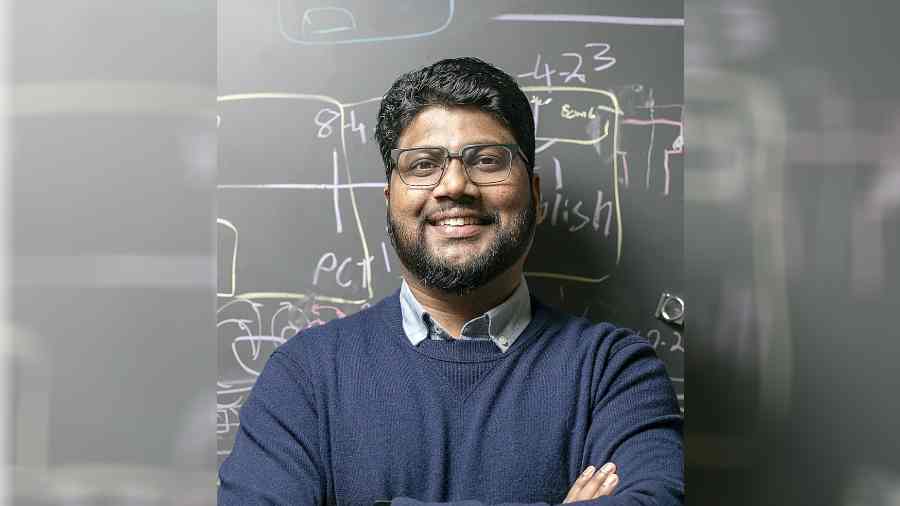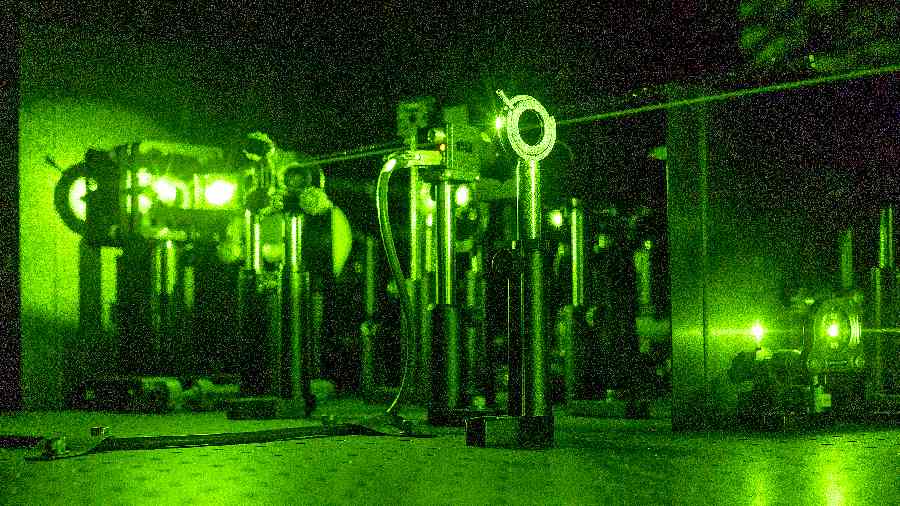Scientists recently announced a tantalising advance toward the dream of a material that could effortlessly convey electricity in everyday conditions. Such a breakthrough could transform almost any technology that uses electric energy, opening new possibilities for your phone, future fusion power plants and magnetically levitating trains.
Usually, the flow of electricity encounters resistance as it moves through wires, almost like a form of friction, and some energy is lost as heat. A century ago, physicists discovered materials, now called superconductors, where the electrical resistance seemingly magically disappeared. But these materials only lost their resistance at unearthly, ultracold temperatures, which limited practical applications. For decades, scientists have sought superconductors that work at room temperatures.
The new announcement is the latest attempt in that effort, but it comes from a team that faces wide scepticism because a 2020 paper that described a promising but less practical superconducting material was retracted after other scientists questioned some of the data.
The new superconductor consists of lutetium, a rare earth metal, and hydrogen with a little bit of nitrogen mixed in. It needs to be compressed to a pressure of 1,45,000 pounds per square inch before it gains its superconducting prowess. That is about 10 times the pressure that is exerted at the bottom of the ocean’s deepest trenches.
But it is also less than one one-hundredth of what the 2020 result required, which was akin to the crushing forces found several thousand miles deep within the earth. That suggests that further investigations of the material could lead to a superconductor that works at ambient room temperatures and at the usual atmospheric pressure of 14.7 pounds per square inch.
“This is the start of the new type of material that is useful for practical applications,” said Ranga P. Dias, a professor of mechanical engineering and physics at the University of Rochester in New York, US.
A fuller accounting of his team’s findings was published in Nature, the same journal that published, then retracted, the 2020 findings.
The Rochester team started with a thin foil of lutetium, a silvery-white metal that is among the rarest of rare earth elements, and pressed it between two interlocking diamonds. A gas of 99 per cent hydrogen and 1 per cent nitrogen was then pumped into the tiny chamber and squeezed to high pressures. The sample was heated overnight at 150 degrees Fahrenheit, and after 24 hours, the pressure was released.

A diamond placed in a diamond anvil cell under a microscope
About one-third of the time, the process produced the desired result: a small vibrant blue crystal. “Doping nitrogen into lutetium hydride is not that easy,” Dias said.
In one of the University of Rochester lab rooms used by Dias’ group, Hiranya Pasan, a graduate student, demonstrated the surprising hue-changing property of the material during a reporter’s recent visit. As screws tightened to ratchet up the pressure, the blue turned into a blushing tint.
“It is very pink,” Dias said. With even higher pressures, he said, “it goes to a bright red.”
In the paper, the researchers reported that the pink crystals exhibited key properties of superconductors, like zero resistance, at temperatures up to 70 degrees Fahrenheit.
“If this is real, it’s a really important breakthrough,” said Paul C.W. Chu, a professor of physics at the University of Houston, US, who also was not involved with the research.
However, the “if” part of that sentiment swirls around Dias, who has been dogged by doubts and criticism, and even accusations by a few scientists that he has fabricated some of his data. Nonetheless, the new paper made it through the peer review process at the same journal.

Scientist Ranga P. Dias
Superconductivity was discovered by Heike Kamerlingh Onnes, a Dutch physicist, and his team in 1911. Not only do superconductors carry electricity with essentially zero electrical resistance, but they also possess the strange ability known as the Meissner effect that ensures zero magnetic field inside the material.
The first known superconductors required temperatures only a few degrees above absolute zero, or minus 459.67 degrees Fahrenheit. In the 1980s, physicists discovered so-called high-temperature superconductors, but even those became superconducting in conditions far more frigid than those encountered in daily use.
The standard theory explaining superconductivity predicts that hydrogen should be a superconductor at higher temperatures if it could be squeezed hard enough. But even the most resilient of diamonds break before reaching pressures of that magnitude. Scientists started looking at hydrogen mixed with one other element, surmising that the chemical bonds might help compress the hydrogen atoms.
In the research described in the retracted 2020 paper, Dias’ group used hydrogen, sulfur and carbon. With three elements, the scientists said, they were able to adjust the electronic properties of the compound to achieve a higher superconducting temperature.
Not everyone believed that, however.
Dias’ main antagonist is Jorge Hirsch, a theoretical physicist at the University of California, San Diego, US. When Dias released the underlying raw data, Hirsch said, his analysis indicated that it had been generated by a mathematical formula and could not be actually measured in an experiment. “From a measurement, you do not get analytic formulas,” Hirsch said. “You get numbers with noise.”
Notably, Hirsch has been saying that there cannot be superconductivity in any of these high-pressure materials because hydrogen cannot be a superconductor. He has gained few allies.
Because the new lutetium-based material is superconducting at much lower pressures, many other researchers will be able to try to reproduce the experiment. Dias said he wanted to provide a more precise recipe for how to make the compound and to share samples, but intellectual property issues need to be resolved first. He has founded a company, Unearthly Materials, that plans to turn the research into profits.
NYTNS










